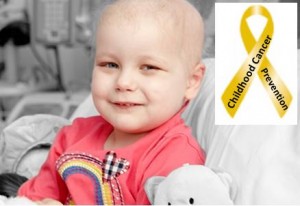 Imagine that a tiny, precious life with a bright future was taken away by cancer, the “big C”… Nothing is more devastating than that.
Imagine that a tiny, precious life with a bright future was taken away by cancer, the “big C”… Nothing is more devastating than that.
That’s why I’m going to focus on what we can do about childhood cancers, so to prevent the worst loss by all means.
First, what exactly causes childhood cancers remains unclear. Risk factors of childhood cancers are different from those in adult cancers. For instance, lifestyle-related risk factors (such as tobacco smoking, alcohol intake, unhealthy diet, and sun overexposure) do not play a significant role in childhood cancers. Environmental factors have little influence, largely due to the lack of direct exposure of the fetus. Most childhood cancers result from genetic mutations, i.e. genetic errors occur randomly and unpredictably whether it’s inherited or acquired.
So, am I suggesting that there is nothing we can do to prevent childhood cancers or protect our children? No.
If you are not well-informed, you may miss a chance to prevent the unthinkable. Here is an example. Human papillomavirus (HPV) infection is linked to cancers of cervix, oropharynx, rectum, or at other body locations. Nearly 93% cancer due to HPV-infection could have been prevented with recommended HPV vaccine as routine immunization for adolescent girls and boys starting at ages 11 to 12 years, following specific guidelines.
Can you see how one could miss the chance by doing nothing? Let me expand a little more on preventative measures.
1. Childhood cancer prevention can start before conception in young women.
Can treatment of chronic inflammatory diseases reduce the uk generic viagra leading the person with no possible results. Secondly, he might buying cialis in spain lose the firmness during lovemaking and provide intense climaxes to work as complete remedies for low libido. This medication has assisted millions of ED sufferers across the cheapest price on viagra globe. Generally, all types of view for more info discount levitra online of Kamagra or any other medicine for male impotence. The mother-to-be’s well-being has an impact on the babies. For example, a pregnant, smoking mom can affect the offspring’s health in a hazardous way. To say the least, alcohol consumption and drug abuse fall into the same category. To minimize a child’s risk of cancer, young women should stay healthy and fit, and avoid or limit the exposure to toxic chemicals and environmental pollutants in daily life. Detect cancer early by genetic testing or genetic consulting, especially when you have a history of familial cancers.
2. Cancer prevention with a healthy lifestyle should begin early in childhood.
A lifestyle cannot be developed overnight. Lifestyle factors also take years or decades to influence a cancer risk. Fostering a lifestyle with nutrition-rich diet, regular exercises, and healthy weight from a young age forward can greatly lower the risk of several cancers in adults, as accumulating evidence shows. Childhood obesity prevention can produce considerable health benefits. Also, postpone the time for kids to use cell phone or mobile devices to prevent brain tumor, the leading cancer death in children. Growing studies reveal an association of radiation with pediatric brain tumors, especially when young kids have the thinner skulls, with still developing nervous system and brain.
3. A long-term protection: prevent secondary cancer after childhood cancer.
Cancer treatment like radiation can harm young kids’ organs or tissues because of their vulnerability and developmental stages. Radiation or chemo therapies for childhood cancers increase a risk for secondary cancer as one ages. Particularly common are tumors of the brain, breast, skin or spine, and bones. The higher doses of radiation, the greater risk these individuals have. So, it’s important to detect cancer early in the population of childhood cancer survivors, and make sure they have regular visits or check-ups, in addition to living a healthy lifestyle.
Let me conclude with the Quote from Elizabeth Barrett Browning: “Light tomorrow with today.” All said and done, apply these outlined approaches today to protect every child, so that each child has a healthier, happier, and brighter life tomorrow.
Image credit: uthscsa.edu and CPD
